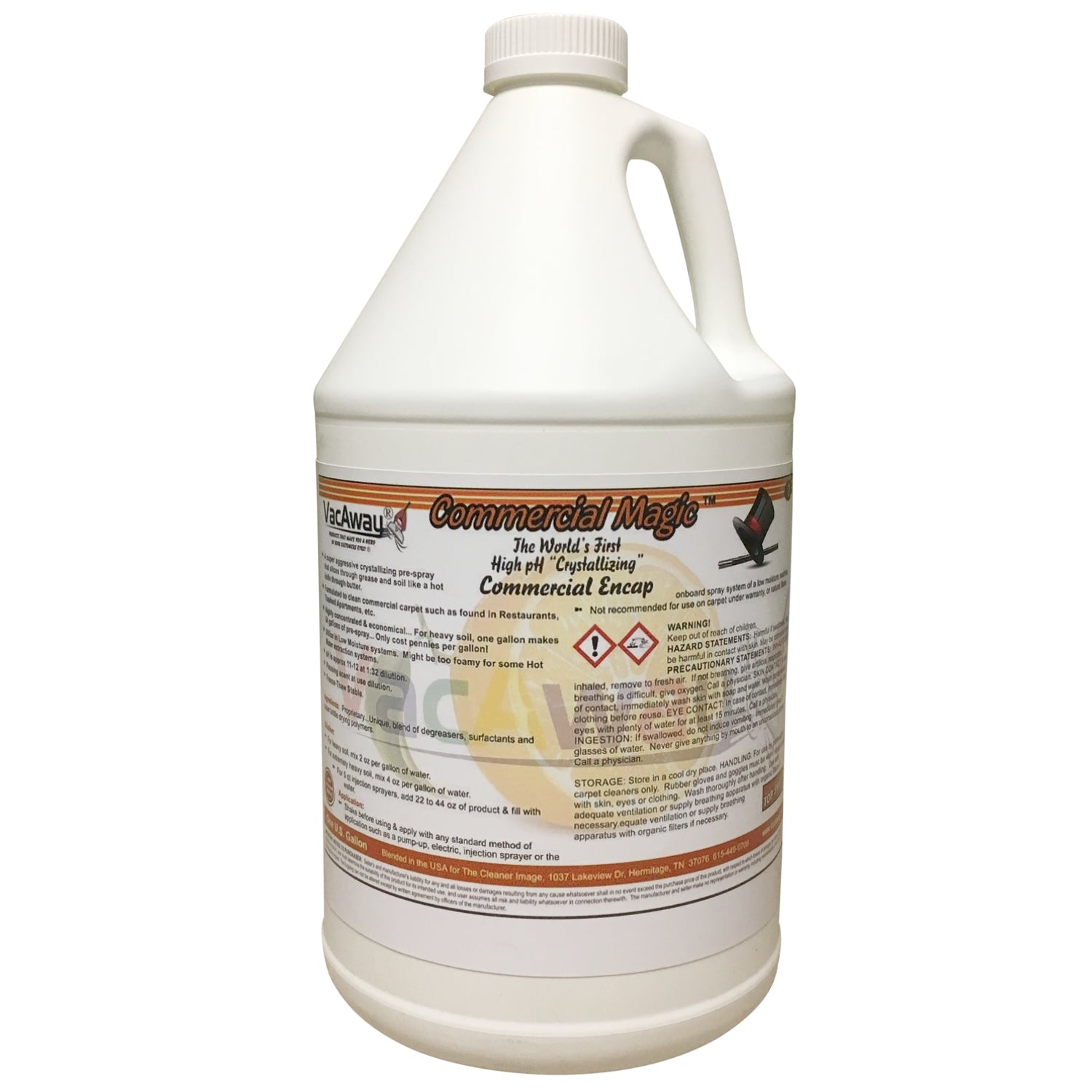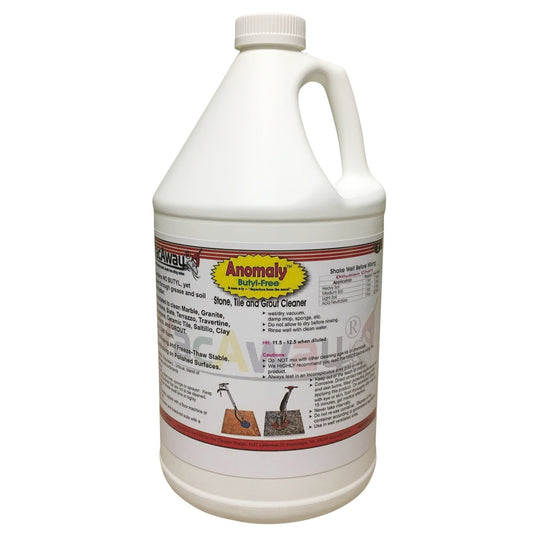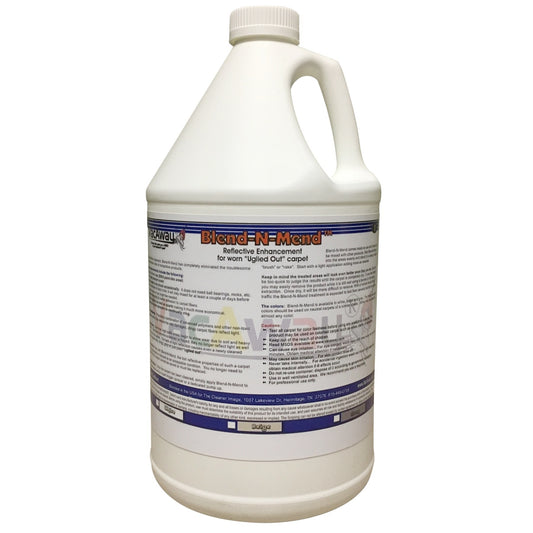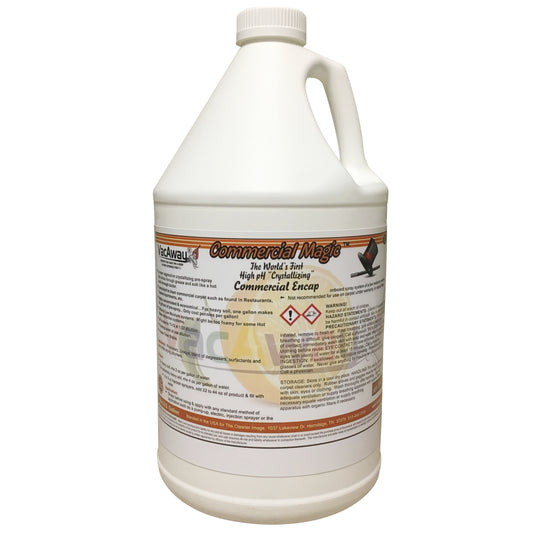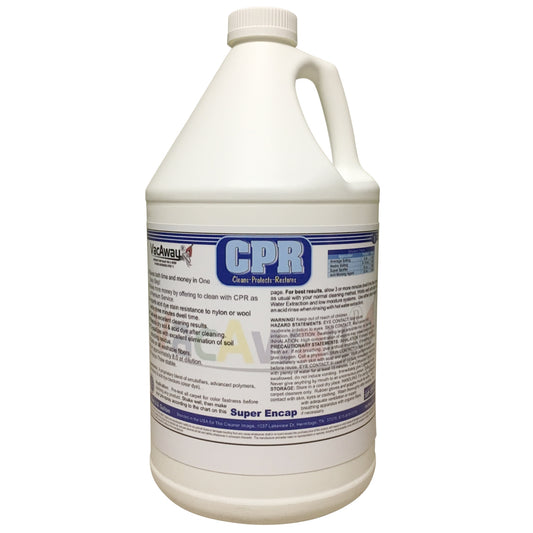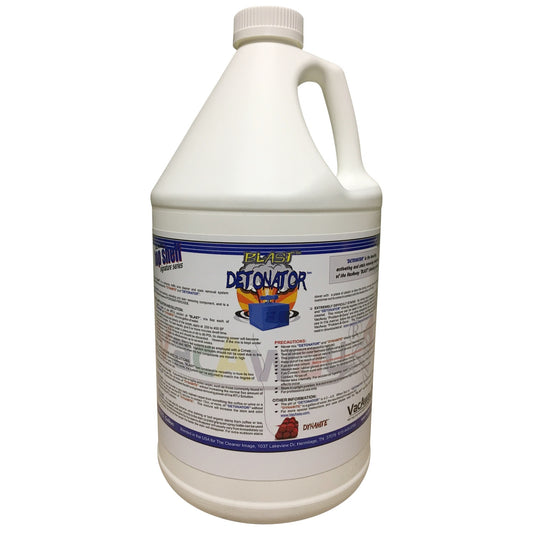Encapsulation 101

MAJORITY OF DIRT AND GRIME isn’t really encased in a capsule or crystal. Instead, well-formulated encap detergents render sticky residue completely NON-STICKY!
Many refer to encapsulation carpet cleaning as “encap” or “encapping.” Although often misunderstood, the cleaning system has gained tremendous popularity in recent years. Encapsulation has been around since the late 1990’s or early 2000’s. The method often uses similar equipment as the “Shampoo” method. For that reason, many have confused, dismissed and equated it with that method. But, encapsulation uses a very new and revolutionary different type of chemistry!
The encapsulation cleaning system applies a cleaning solution containing a crystallizing, acrylic polymer. It is this polymer that helps create the magic of encapsulation. Encapsulation formulas also contain other cleaning components such as surfactants. The other ingredients, aid in breaking the bond between dirt, grease & grime and the carpet fibers. The encapsulation cleaning solution is usually worked into a carpet with an agitation machine. The machine types used include Cimex, Rotary Brush, Rotary Bonnet, Oscillating Pad (OP). There are others as well. The agitation facilitates in breaking the chemical bond between dirt and fiber. It also mixes the encap solution with the soil and sticky-residue. Upon drying, the solution crystallizes rendering the residue to be completely non-sticky. Routine vacuuming removes the encapsulated particles. Whichever machine is employed, well-formulated encapsulation detergents can produce remarkable and incredible results!
Most suppliers of encap products explain it as surrounding or encapsulating the dirt. No doubt, this explanation is accurate to some degree. In the mind’s eye, it does make it very easy to visualize how the process works. At VacAway we have ran countless tests. Our tests have caused us to conclude that the above explanation is only a VERY SMALL PART of what takes place. Allow me to explain: The encapsulating polymer does surround a certain amount of the soil. But there is another even MORE IMPORTANT PROCESS that takes place during encapsulation:
Approximately 79% of all carpet soil is dry particulate matter. Routine vacuuming can remove most of these dry soils. But, it is the other 21% that causes carpets to “Ugly Out” and need professional cleaning.
Without sticky residue, there would seldom be a need for a professional cleaning. A good vacuum cleaner could be used to remove the accumulated soil - The 21 Percent. The best performing encapsulation products contain EXCESS ACRYLIC POLYMER. The polymer mixes with and helps liquify sticky substances in the carpet. These sticky substances come from tracked in dirt and oils. They also come from soda spills, and over the counter spot removers. Another contributor is sticky surfactants left from previously applied non-encapsulating cleaners.
In and of themselves, many professional cleaning products are inherently sticky. After their application, the sticky surfactants are never 100% removed. Their sticky residue lingers behind to attract more dirt and soil. What is the major complaint people have after having their carpets professionally cleaned? They complain that their carpets get dirty again very quick! The culprit is usually due to the left-behind sticky residue!
Well-formulated encapsulation detergents remove the stickiness in the carpet. Also, due to their chemical make up, they will never leave behind a sticky residue of their own. A well-formulated encap will crystallize. It can then be removed during routine vacuuming. A carpet cleaned with an excellent encap product will stay cleaner, longer too.
What’s the bottom line? The MAJORITY OF DIRT AND GRIME isn’t really encased in a capsule or crystal. Instead, well-formulated encap detergents render sticky residue completely NON-STICKY!
Here is a demo you can do yourself to see how the process works:
- Place a small drop of dish detergent (sticky residue) in the bottom of a shallow dish or saucer. Using artificial maple syrup (sticky residue) is another test option.
- Place three drops of a pure encap such as our Encap GREEN, Hot Knife X-treme or Commercial Magic with it and mix all together.
- Give it plenty of time to dry, at least 24 hours or more, to be sure it dries completely.
- Pour a lot of black pepper over the dried detergent/encap mixture.
- Immediately dump the pepper off the dried mixture. Give it a quick hard blow to blow off any remaining pepper from static cling.
Encapsulation Carpet Cleaning
When addressing carpet cleaning, the predominant perception among cleaning professionals and building managers is that extractors are the sole means of cleaning carpets. While extractors can be highly efficient for this purpose, encapsulation is an alternative method that effectively complements and even replaces carpet extraction. The encapsulation method is considered a Very Low Moisture cleaning (VLM) method, and is employed to clean carpets with minimal moisture.
Both extraction and encapsulation techniques can yield favorable results and offer numerous advantages. Nevertheless, it is essential for carpet cleaning technicians and professionals to be aware of the distinctive benefits associated with encapsulation methods.
10 Reasons To Use Encapsulation
1. The encapsulation method effectively maintains the carpet’s optimal appearance.
2. Carpets cleaned with the encapsulation method typically dry within an hour or less, allowing facilities to resume regular operations more quickly.
3. The equipment required for encapsulation is generally more affordable compared to extraction equipment. In fact, many cleaning professionals already possess low-speed machines that can be used for encapsulation.
4. The encapsulation method proves to be highly profitable when charging based on square footage, as it enables cleaning a larger area in a shorter time. This is known as achieving a “high production rate” in the professional carpet cleaning industry.
5. Extractors can overwet the carpet with a risk of loosening glued carpet tiles or carpet edges. Encapsulation minimizes this risk.
6. Extraction typically consumes approximately 20 gallons of water per 1,000 square feet, while encapsulation requires only about four gallons or less.
7. Encapsulation significantly reduces the likelihood of wicking, which occurs when soil rises to the surface of the carpet through capillary action.
8. Learning the encapsulation method requires minimal effort compared to operating a carpet extractor.
9. Soil collected through encapsulation systems can be easily removed using a vacuum cleaner, whereas extraction methods discharge gallons of soiled water into sewers.
10. The encapsulation method extends the intervals between carpet extraction sessions, resulting in cost savings, less disruption to building occupants, and improved environmental friendliness.
FAQ
What is the difference between a "Film Former" and a "Crystallizer?"
Crystallizers are better at removing sticky residue left from previously applied, cleaning products. They also effectively render sugary/sticky substances, that have accumulated in the carpet, (i.e. soda spills) non-sticky. Once they are rendered non-sticky they can be easily vacuum away.
Why is a crystallizer better than a film former at removing sticky residue?
Because a good crystallizing formula will contain “MORE EXCESS POLYMER” than that of a film former.
By “MORE EXCESS POLYMER” we mean the amount of polymer in the formula beyond the amount needed to render its other ingredients non-sticky.
Many ingredients used to create a good cleaning formula are inherently sticky themselves. If not completely removed, or somehow rendered non-sticky, they can be the cause of rapid re-soiling of carpeting and upholstery.
The EXCESS polymer is left to mix with sticky substances in the carpet and render them non-sticky. They will then no longer be able attract dirt and will be vacuumed away during routine vacuuming.
Keep in mind that most Film Formers also contain a certain amount of excess polymer to fight stickiness, but not nearly as much as Crystallizers.
NOTE: Crystallizers, in general, are usually more expensive than Film Formers due to their higher cost to produce.
Some encap distributors only sell Film Formers to keep their cost low and therefore be able to have more competitive pricing. As the old adage says, “You Usually Get What You Pay For.” At VacAway, we make both types available. Some formulas can only be produced as Film Formers due to the other types of ingredients used in the formula.
What are the benefits of encapsulation carpet cleaning?
•Rapid Dry times. (Very low moisture is used)
•Less disruption for your clients. (No hoses, loud equipment or slow drying times)
•Much less expensive equipment needed. (More profit for you)
•Carpets stay cleaner longer. (No sticky residue with anti-wicking acrylic polymer)
•Much less labor intensive. (More profit for you)
•Much less wicking issues. (Low moisture and anti-wicking acrylic polymer)
•Less environmental impact (No dirty water to discharge into sewers/drains)
What are your best cleaners for the "nasties" such as Restaurants, Apartments, etc.?
1. Commercial Magic (Best for low moisture use on carpets not under warranty. Has a high pH. It might be a bit too foamy for Hot Water Extraction.) It is a great Crystallizer.
2. Grease Hawg (Best for Hot Water Extraction. Has a high pH, but has less foam than Commercial Magic.) Also great for Low Moisture use. It is a Film Former.
3. Hot Knife X-Treme (Best for use for carpets under warranty. Has pH less than 10.) It is a great Crystallizer.
Other Resources
Shop Now
-
Blend-N-Mend
Regular price $ 49.25 USDRegular priceUnit price / per -
Commercial Magic
Regular price From $ 59.75 USDRegular priceUnit price / per
